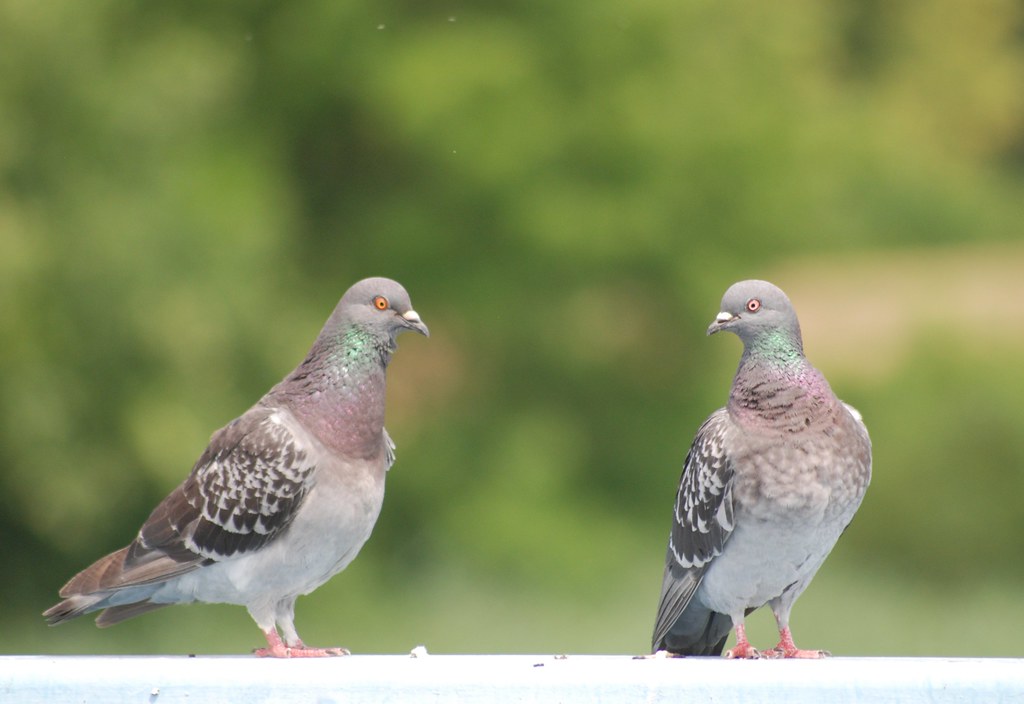
Pigeons, believe it or not, were the first trained birds thousands of years ago. Countless millions of pigeons are kept for racing, adornment, entertainment, and food around the world, and they are often dismissed as little more than a nuisance by many people however, they have taken over most of our major towns, cities, and urban regions, and they can not only be a nuisance in terms of crowding, but they also pose a threat to humans by carrying and spreading diseases and viruses!
There are several aspects to consider while addressing the question, ‘How do pigeons spread diseases?’ Unlike other birds, they nest in their excrement which attracts many bacteria and insects which are enough to spread diseases.
We all know not to touch or pick up pigeon droppings with our hands, but it’s a little more intricate than that!
Droppings serve as a big absorbent for viruses, and while this isn’t hazardous in smaller quantities, the buildup of bird feces over time can raise the risk of infection. Pigeon droppings infected with bacteria or viruses are frequently left to settle on the roadways, window ledges, roofings, and even on cars. They turn into powder when blown or kicked into the air, which is then breathed. Pathogens that can cause disease can be transmitted to people through inhalation of this powder.
Feathers are not the as common culprit as excrement, are a frequent contributor to the spread of disease among birds. Feathers of birds, particularly those in densely populated places, are known to harbor a wide range of germs, parasites, and viruses. It’s worth noting, though, that the feathers that carry these hazards are usually from a dead bird.
Nests are also play important role in the spread of illnesses, especially fungus, which can spread through the material that birds collect and utilize for nesting. In addition to this, parasites and insects such as mites and lice thrive in bird nests.
These are some shreds of evidence where birds come into direct conflict with humans!
Almost half of the feral pigeons carry infectious disease
A trade body has warned that up to 49% of feral pigeons may carry an infectious disease that can be transmitted to people. The British Pest Control Association (BPCA) has published an online guide for dealing with pigeons, gulls, and other pest bird species. When birds take up residence in or near our houses or businesses, a few species of birds come into direct conflict with humans. These birds can bring serious issues, such as extreme nuisance and public health concerns.
Pigeon droppings, when dried, can become airborne in small particles, causing respiratory problems. Bird droppings are also slippery and can pose a major hazard on pavements, especially when roosting birds are present. They also give the impression that the business is untidy and in need of maintenance.
The BPCA’s bird guide also emphasizes the possibility of secondary insect infections, as well as the problem of unprovoked gull attacks during the breeding season.
Pigeons at Glasgow’s Queen Elizabeth University Hospital dismissed as nuisance just months before dropping-linked deaths
NHS Greater Glasgow and Clyde (NHSGGC) claimed its consultant in public health had assessed the problem to be an “environmental nuisance rather than major risk for human health. Senior managers at a hospital where disease from pigeon droppings killed two patients dismissed safety concerns about the birds just months before the fatalities. NHS Greater Glasgow and Clyde (NHSGGC) were contacted with detailed fears over the risk of contamination infection from pigeons at the Queen Elizabeth University Hospital (QEUH) in Glasgow.
But in response, the board claimed its consultant in public health had assessed the problem to be an “environmental nuisance rather than major risk for human health”. Prosecutors are investigating the deaths of a 10-year-old boy in December 2018, and a 73-year-old woman in January 2019. Both incidents have been linked to Cryptococcus infections from pigeon droppings.
Along with this, “Pigeons carry a surprising number of pathogens that spread diseases more than 60 varieties.”
Just like rats, pigeons and other birds are capable of harboring deadly diseases, which is why, if you have a bird problem, it’s essential to properly remove and prohibit them from accessing your commercial or residential property.
Combirepel™ is an anti-rodent, anti-insect, and bird aversive developed by C Tech Corporation for a variety of applications.
Combirepel™ Bird Repellent Gel Lacquer is designed to keep birds at bay. This product is developed solely to keep birds from perching and roosting.
It is available in the form of lacquer and works on the principle of tactile repellence. The product causes the bird’s pain receptors associated with taste. Some birds use their sense of smell to determine whether the substance is dangerous or not. Repellent induces a physiological reaction in the birds, which they equate with a sensory cue and learn to avoid. As a result, their infestation is minimized, and harm is prevented.
The gel lacquer is compatible with most of the surfaces and is easy to apply. Also, it can be directly applied to areas prone to bird roosting.
Our Bye-Bye Birdy bird repellent spray is very user-friendly and convenient for application.
Thus using the bird’s sensory mechanism we can get rid of them without causing them any harm.
Our products are RoHS, RoHS2, RoHS3, EU – BPR, REACH, APVMA, NEA compliant and FIFRA exempted.
Contact us at technical.marketing@ctechcorporation.com to keep the pests away.
Also, visit our websites:
1] http://www.ctechcorporation.com/
Follow our Facebook pages at:
1] https://www.facebook.com/Combirepel-411710912249274/
2] https://www.facebook.com/Termirepel-104225413091251/
3] https://www.facebook.com/Rodrepel-120734974768048/
Follow us on our Twitter pages at:
1] https://twitter.com/rodrepel


